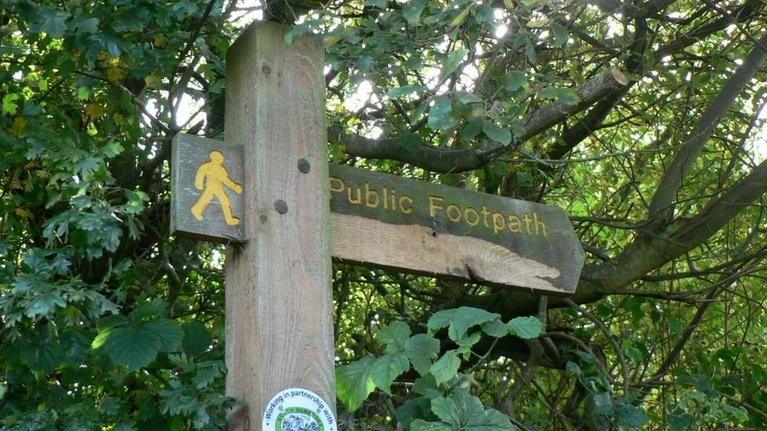Legal ruling could see thousands of paths reinstated
- Published
Up to 1,000 bridleways and footpaths in England and Wales could be reinstated more than 200 years after disappearing from maps.
It follows a Court of Appeal ruling that two paths in Wiltshire are legal rights of way.
John Andrews, ex-Ramblers Association secretary, won the case to reopen the paths, near Crudwell, after 20 years.
At the appeal court, Lord Dyson said the decision sets a precedent for up to 1,000 other locations.
Mr Andrews acted after the government upheld a Wiltshire Council decision to reject the paths' reinstatement.
'Linguistic imperfections'
The two bridleways - one 10ft (3m) wide and the other 15ft (4.5m) - were originally recorded by land commissioner Daniel Trinder, in the early 1800s.
However with the authority of parliament, Mr Trinder was engaged to enclose large fields in common use in the Crudwell area and replace them with smaller plots of privately-owned land.
More than 200 years later Lord Dyson, Master of the Rolls, decided that despite the "linguistic imperfections" of the 1801 Inclosure Consolidation Act - Mr Trinder had had the power to "set out and appoint" public bridleways and footpaths.
He told the court: "We have been told that there are believed to be between 500 and 1,000 cases in England and Wales where public footpaths and bridleways set out and appointed by commissioners are not currently recorded in the relevant definitive maps".
- Published10 May 2012

- Published28 September 2010